Almost 13 years ago we began our tiny living journey traversing the canals and ancient locks carved throughout the countryside of the United Kingdom aboard our 36’ narrow boat, which we soon upgraded to a 28’ narrow boat as we discovered living even smaller was better for our personal lifestyle.
Since then, we have been living these past 10.5+ years in our 304sqft DIY off-grid cabin, and have built & accumulated our collection tiny dwellings (three tiny houses on wheels, two 20’ geodesic domes, two yurts, three 20’ bell tents, a short-bus skoolie, and a number of other small structures), which are all located on our residence here in Georgia at our 16-acre Beloved Cabin Tiny House Homestead & Stay.
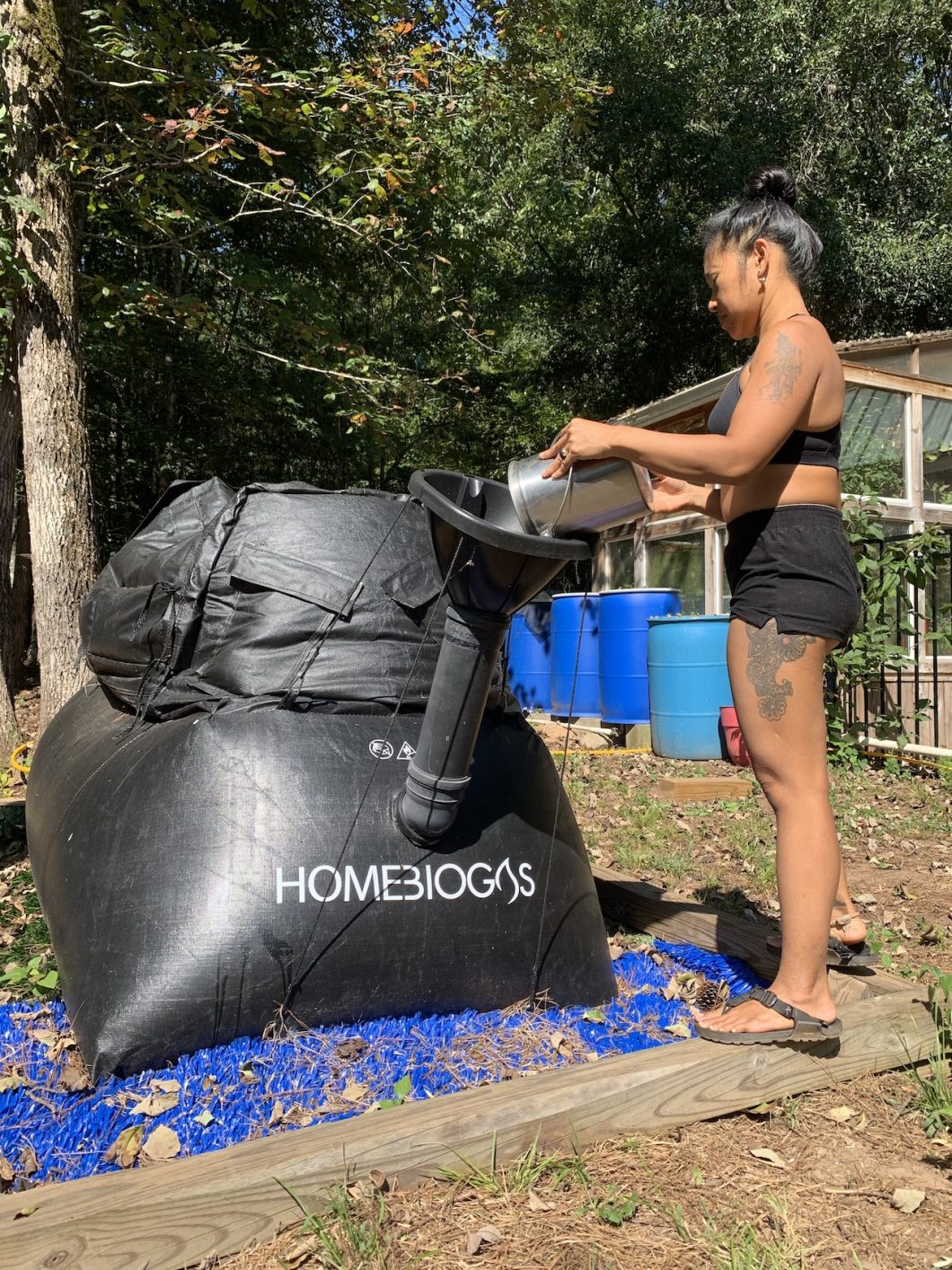
“What to do with our poo?”
Since the very beginning of our decision to live small, there has always been the question, and at one time an obstacle, “What to do with our poo?”
The holding tanks on our two narrow boats would occasionally need to be pumped out at one of the various disposal points along the canal system. When we decided to live off-grid in our before-mentioned 304sqft cabin we began humanure composting by emptying the contents of our Nature’s Head, Separett, Laveo, and DIY toilets into the large multi-55-gallon-drum composting system we built. (Note: We own and have utilized a number of different composting toilets and have built assorted styles/versions of composting toilets.)
Each time we have taken a cross-county or short road trip with one of our small homes, we always strive to be good stewards of our earth by bringing back our human waste for proper disposal into our humanure composting system. (We believe it does not make much sense to have a composting toilet inside our rigs just to dump our waste in a garbage can at a gas station or in a dumpster behind some random building… and we firmly do not believe in digging a hole somewhere to bury our waste on someone else’s property or on public land.
Let’s make some gas!
So, when the opportunity presented itself to add our first of two HomeBiogas Systems to our arsenal of off-grid assets, we jumped at the chance. “What? We can properly dispose of poop in a way that is clean for the environment and less work than humanure composting… PLUS we can also create cooking fuel with both our waste and kitchen scraps to alleviate our reliance on propane by creating a clean cooking fuel AND produce a highly concentrated and high-nutrient liquid fertilizer for all our gardens, growing beds, fruit trees, and potted plants? WE’RE IN!”
Since implementing our HomeBiogas system almost 3 years ago, we’ve taken it to a whole new level beyond our initial concept of just wanting to properly dispose of our human waste. We now have a small herd of goats, which we started with the specific intent for their milk and to utilize their scat in our HomeBiogas system, which has proven to be great for our methane producing efforts in creating cooking fuel. Also, by using our goats’ scat and our own waste on a daily basis in our HomeBiogas system, we have been able to return to adding all of our kitchen scraps back to our soil creating compost projects.
Every day we get about 3 hours (+/-) of clean cooking fuel from our HomeBiogas system. There is no smell either when the system off-gases or when cooking. (A lot of folks assume since the system creates methane cooking fuel there must be a scent, but there is not.)
Our “Black Gold” benefit!
An equally great benefit is the liquid biofertilizer our HomeBiogas system creates as a by-product of the digester. A black liquid “tea” comes out the opposite end of the system from where we add our and our goats’ waste to the system. This “tea,” or “black gold” as we call it, is a nutrient-rich liquid biofertilizer we use with all our veggie/fruit plants and fruit trees. Since using this “black gold” in our gardens and fruit orchard we have seen an amazing increase in yields, size, and the quality of our produce. We choose to have the “black tea” empty into a 5-gallon bucket so we can dilute it and distribute it throughout our gardens and fruit trees. (One can also have the “black tea” empty through a leech field and drain under the earth directly into a garden area or vegetable bed.)

The Science…
So how does HomeBiogas system work? After setting up the system by following the easy step-by-step instructions (https://www.homebiogas.com/wp-content/uploads/2021/03/HB2GF_0321_print_v2.pdf) provided with our system, we filled the base (or “digester” as it is called) with water until it was full and then added about 25 gallons of “slurry”, which is a 50/50 mixture of water and either horse, pig, sheep, cow, or goat waste (we used horse manure we collected from a local farm).
After about 6 weeks of “percolating”, our HomeBiogas system’s gas containment bag inflated due methane gas being produced through a process known as anaerobic digestion. Anaerobic digestion is a naturally occurring process that happens when there is no oxygen during the break-down of organic matter… and this in turn creates methane, which is the intended cooking fuel produced by our HomeBiogas system. TA-DA!
What came with our HomeBiogas system…
Everything necessary, and then some, was included with our system. In addition to the system itself, we were provided empty zip-lock heavy duty plastic bags, which we filled with sand and inserted inside all the self-sealing pouches built into the top and upper sides of the inflatable portion of the system. These sand-filled bags provide weight to the methane-filled chamber of our HomeBiogas system, which in turn causes the pressure to pump the methane gas through the fuel line to the provided stove top burner. Yes, there is a stove-top burner included with the system with the proper orifices for burning methane gas evenly and properly. Also, an insertable glass tube heater is provided for when the outside temperatures get colder, and we need a little extra help in keeping the digester nice and warm inside.
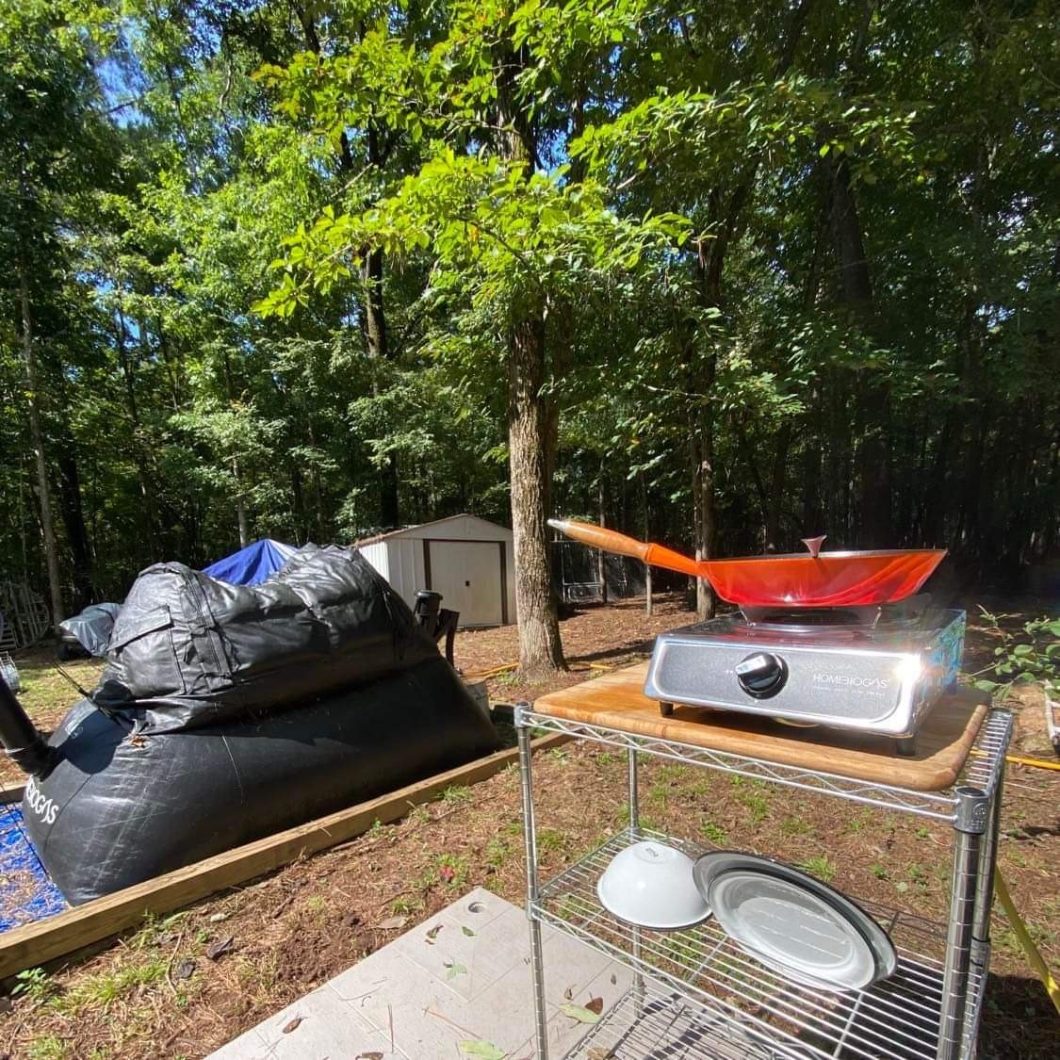
What didn’t come with our HomeBiogas system…
Since we received our two HomeBiogas systems, HomeBiogas has come out with an amazing upgrade to their system… the BioToilet! Instead of manually emptying human waste into the system as we do, one can simply flush their waste directly into the HomeBiogas system. Additionally, the BioToilet is an instant solution for sewerage for when a septic system is not an option or is not convenient to build. Wow! What an amazing convenience that would be! The BioToilet is on our “bucket” list! ?
“Cooking with Gas…”
Growing up we had a saying, “We’re cooking with gas now!” This meaning that things were going smoothly… that an activity or project was coming along nicely. We can honestly say, with the addition of our HomeBiogas system to our off-grid lifestyle, we are definitely, “Cooking with gas!”
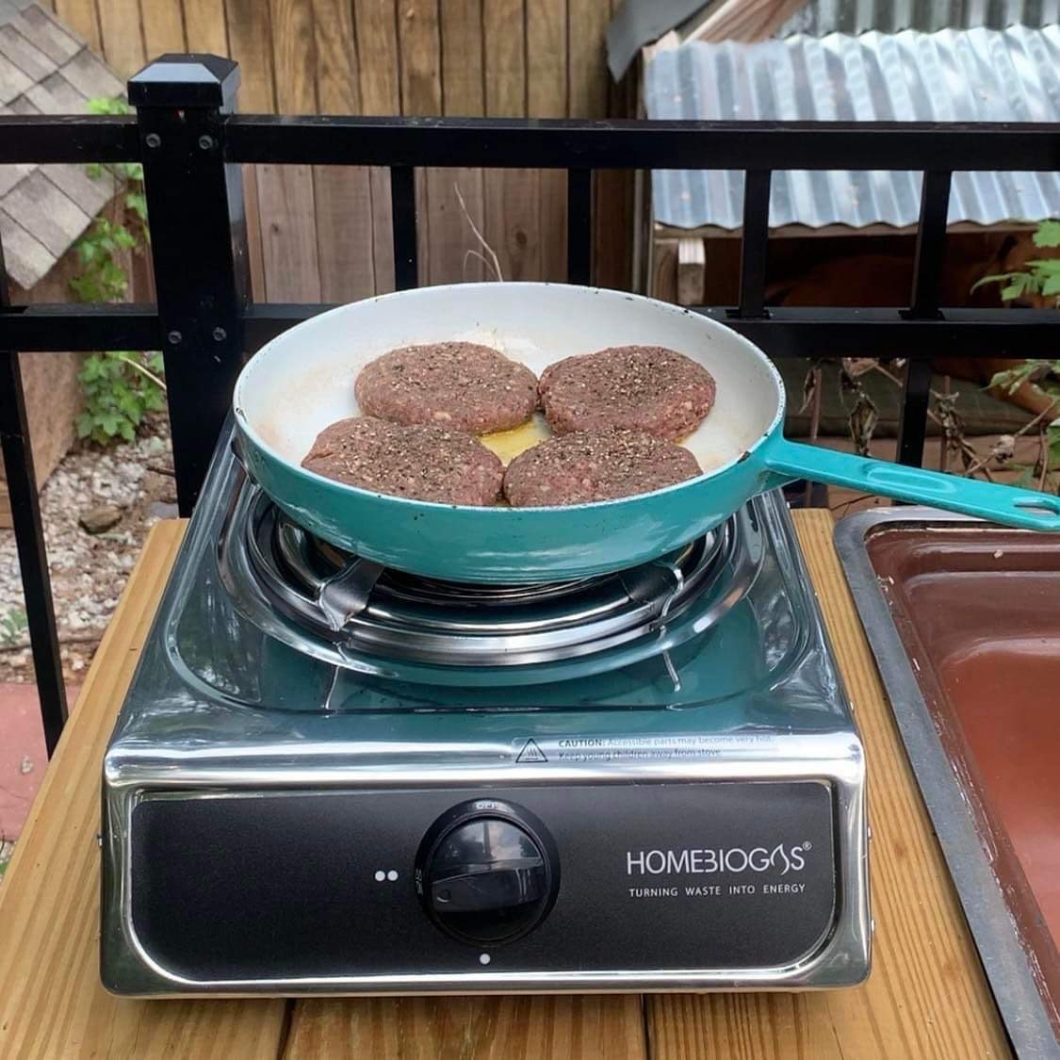
In closing…
We don’t write about or endorse just any product or service out there. Sometimes, we are approached and asked to use a product or try out a service. Most of the times, we purchase products and services we believe will be of benefit to us and our homestead. If any of these products and services prove not to be conducive to our off-grid, minimalist, tiny lifestyle, then you’ll never hear us talk about them. When these products and services, such as our HomeBiogas systems, hit it out of the proverbial ballpark and prove themselves to be incredibly beneficial and supportive of our lifestyle and make our off-grid homestead life easier, then we can’t stop talking about them. This is why we agreed to share this post about our HomeBiogas system, and why anyone can see all our supportive posts online about HomeBiogas and their products. If responsible composting, clean cooking fuel from kitchen scraps & waste, and an unlimited supply of an amazing high-quality liquid fertilizer might be something you would benefit from, then the HomeBiogas system is definitely something we recommend you consider and look into. It’s like we have been saying for a few years now, “OMG… Oh My Gas… Oh Our HomeBiogas!”
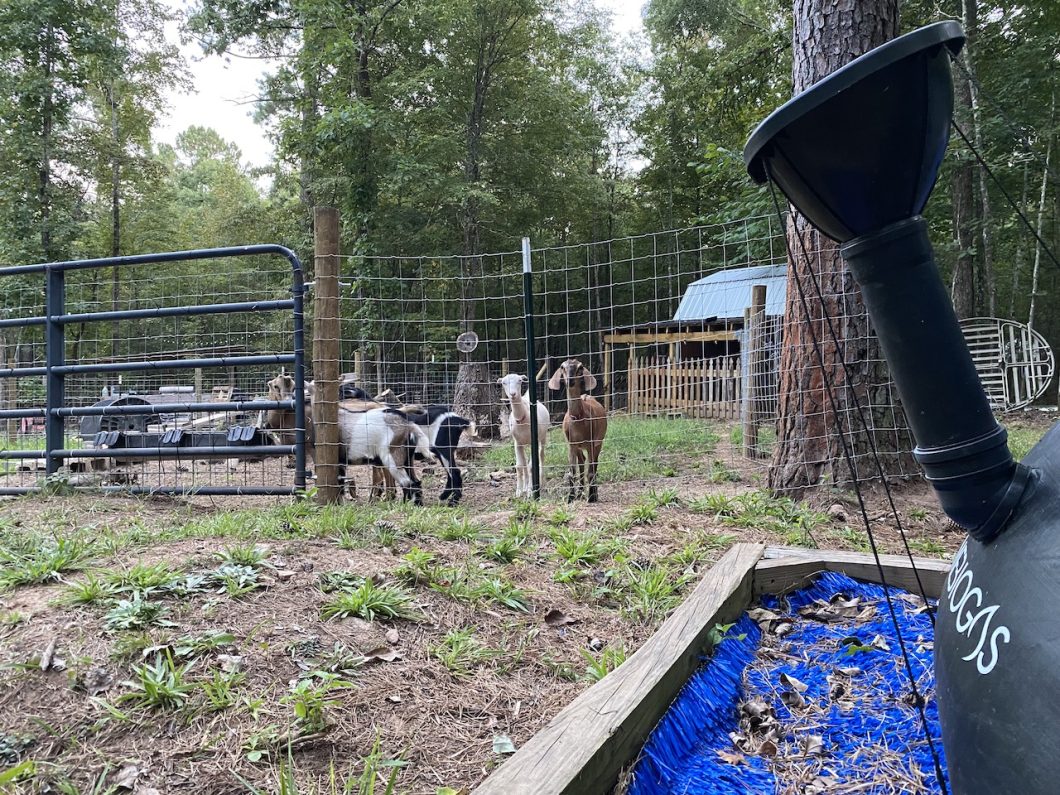
About The Kernohans…
John and Fin Kernohan are the founders of the 55K+ member United Tiny House Association and the organizers of the 27 for-charity tiny house festivals, from which they have raised and donate over $754K+ from the admission ticket proceeds to more than 100 different charities and great causes. They also have been living tiny for approximately 13 years, and they have been living the past 10.5 years in their 304sqft DIY off-grid Beloved Cabin. In 2015 they began purchasing the land parcels now making up their 16-acre Tiny House Homestead & Stay where they have goats, raise chickens, grow their own food, have over 600 gallons of rainwater collection, utilize solar energy for their electricity, rely on both solar thermal energy & catalytic converter a wood burning stove for heat, and welcome guests from around the world to enjoy their short-term rentals of 3 tiny houses on wheels, 2 yurts, 3 geodesic domes, a skoolie, 3 bell tents, and are currently building a robot-themed tree house out of a grain silo. You can follow John and Fin on Facebook and Instagram at Beloved Cabin and United Tiny House, and learn more about their for-charity tiny house festivals and organization at www.unitedtinyhouse.com .
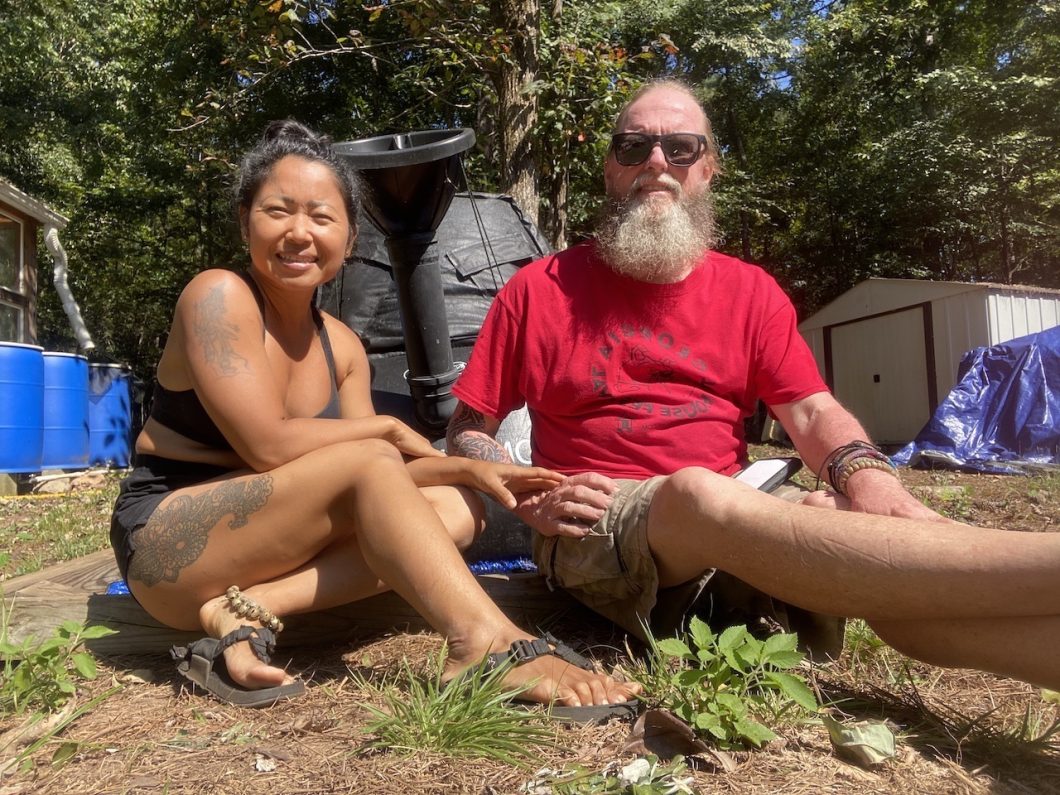
I really wanted to try the Biogas system on our off-grid property, but it doesn’t work up here in the Pacific NW. It only works where the temperature doesn’t get too cold. It requires an average day/night temperature of 68 deg. Most of the year our HIGHS are below that. But what a great invention!